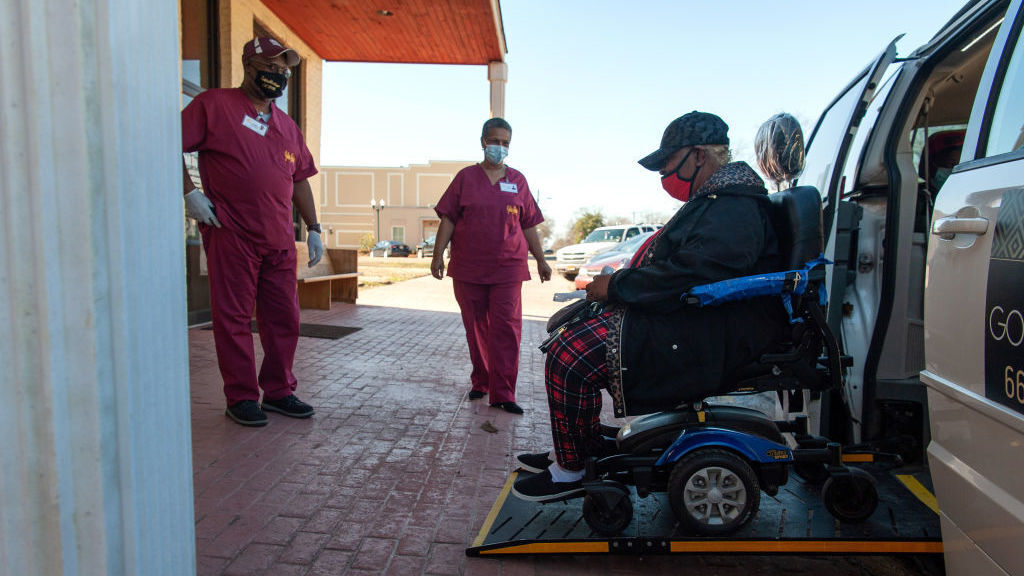
The Vaccination Transportation Initiative sponsored van helps rural residents get the COVID-19 vaccine in rural Mississippi.
Poverty and disability are linked to lower vaccination rates in some rural communities.The Vaccination Transportation Initiative sponsored van helps rural residents get the COVID-19 vaccine in rural Mississippi.
Alaska is the sole state where average rural rates of fully vaccinated people have grown faster than urban rates since April 19, when every state opened shots to anybody 16 and older, according to NPR's latest analysis of county-level vaccination data from the Centers for Disease Control and Prevention.Everywhere else, rates in urban counties have outpaced those in rural counties.Though stark, these gaps may hide a more complex story of vaccination rates, as the data reveals plenty of rural counties well above average and urban areas dragging their feet.Indeed, a CDC report from mid-May included one detail that caught Holmes by surprise: The suburban counties ringing his state's largest cities, Charlotte and Raleigh, N.C., had significantly lower vaccination rates than their urban cores.A second CDC report from early June sheds light on the demographic and social factors linked to lower vaccination rates among all counties, whether rural or urban.Researchers divided counties into four categories — large urban, suburban, small-to-medium urban, and rural — and looked for which demographic profiles were linked to lower vaccination rates.Across all these categories, households with children, people living with disabilities and single-parent households were more likely to see lower vaccination rates.
Counties with higher numbers of mobile home residents, as well as those with higher poverty and lower education rates, also lagged significantly behind other counties within their rural-urban category, according to the CDC report.The CDC researchers also suggest organizing vaccine clinics near childcare facilities and partnering with schools could improve the lower rates they observed among single-parent households in suburban and rural counties
For the remaining 43 states, NPR used 2019 Census population estimates for county residents to calculate the average vaccination rates for each state's rural and urban counties, weighted by county population